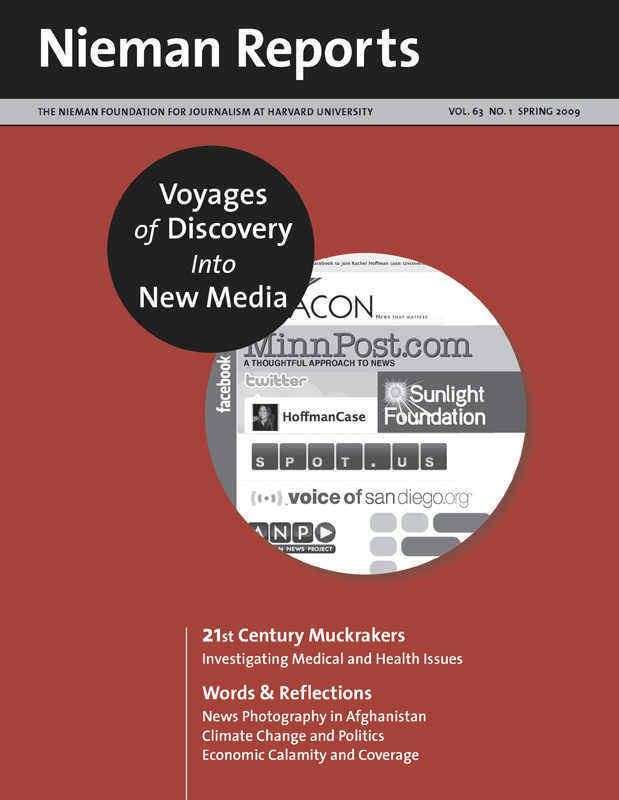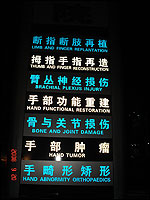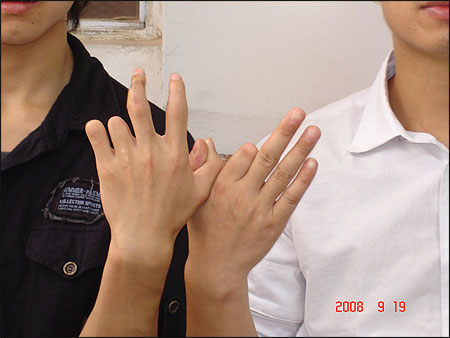
Four years ago, as I drove through China’s Jiangsu Province, known in the past as the “land of fish and rice,” I saw many disastrous effects of its radical industrialization. Rivers, once thriving with fish, were polluted. Farmland, once bountiful, was vanishing. In numerous factories, workers—many of them migrants from poorer regions in China—were producing clothes and textiles, consumer electronics and toys. On the walls of these roadside factories, a frequent advertisement caught my attention. Two huge, red Chinese characters declared “hand connecting,” with a cell phone number below. This graffiti-like drawing looked like an ad for hand surgery. A friend traveling with me confirmed that reconnecting severed limbs is a good business in local hospitals and private clinics. The surgeons near these factories, he said, are very accomplished in doing this kind of repair.
As a reporter and a former medical doctor, I knew that this requires intricate surgery performed using a special microscope and miniature precision instruments. Learning of this unexpected skill of local surgeons indicated to me that there must be a high incidence of amputation in this area, since the level of injury or disease often relates to the practice and skills of nearby doctors. My friend assured me that amputation accidents happen a lot in the factories.
The idea of one day doing a story about this situation popped into my mind. But it would be four years—including one year as a Global Health Fellow at the Nie-man Foundation—before I was able to report on this occupational health crisis in China.
Preparing to Report
RELATED ARTICLE
"Investigating What Harms People—As an Independent Reporter"
- Loretta TofaniBy the summer of 2008, when my reporting began, several extensive articles had been published in the Western press about health issues factory workers confront because of exposure to toxic chemicals in making exported products. As a Chinese reporter, I knew that doing an in-depth investigation on migrant workers’ health is regarded as a very politically sensitive topic, and press censorship and oversight would be a factor in me being able to tell this story. If, however, I presented occupational health issues in China as a public health concern rather than as a story about human rights, I felt I could make my reporting be more scientific and have the story be constructive and less politically sensitive.
With this approach, I’d be able to use my medical training to read academic literature and talk with medical sources. Dozens of professional periodicals on occupational medicine and industrial safety are published in China. As a medical reporter, I was accustomed to searching in these journals for case reports and papers and digging out epidemiological data. Then I would turn to experts to learn more. So I went to the medical library of Peking University and read in journals about occupational hazards in the making of furniture, garments, electronics, toys and gems and in coal and gold mining. I found reports on the poisoning of benzene, lead, nickel, n-hexane, cadmium, mercury and other toxins and learned about the causes, spread and symptoms of occupational illnesses—knowledge I would use in my on-the-ground reporting.
In doing this story, I decided to present myself as a Harvard fellow “doing fieldwork” rather than as a reporter for China Newsweek. Although some journalists in China play the role of muckraker even as they deal with government censorship—and their contributions should be valued historically—many of them feel frustrated in being labeled as troublemakers. Bureaucrats warn each other about dealing with such reporters; they use the phrase “three–wariness” that places journalists alongside fire and thieves in what should be prevented in daily official businesses. By presenting myself as a fellow, officials at some exclusive organizations, such as the Chinese Center for Disease Control and Prevention (CDC), accepted my interview. Had I come as a reporter, my reception would have been much different.
Like many reporters in China, I also relied, at first, as many business people do, on connections and personal relationships (relatives, schoolmates, friends, or friends of friends) to find my way to the people and places I needed to see. Even though an authorized press card and stamped “introduction letter” are vital documents for any reporter to carry—if only for self-protection in gathering news—by the time I left Beijing I’d failed to get my press card routinely renewed by the supervising authority—the State Press and Publication Administration. I did have introductory letters from the Nieman Foundation and China Newsweek, and I’d set up strong connections in Jiangsu Province, where I’d grown up, and local friends agreed to assist me.
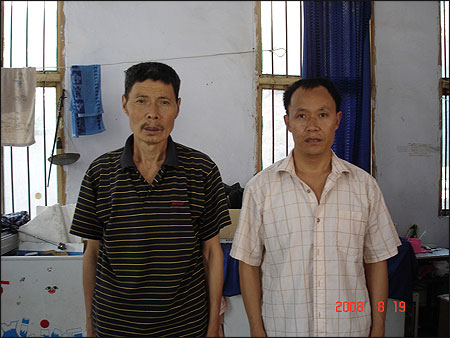
Interviewing Officials in Jiangsu Province
When I arrived in Jiangsu, my welcoming dinner was held at a high-priced restaurant. At our table were a number of local physicians who enjoy the luxuries of life primarily because of kickback money they take from pharmaceuticals, bribes in “red envelopes” from patients, and the moonlighting they do in lower level clinics. The government’s commercialization of medical facilities has broken down the former state-supported systems of public health and medical care. Medical services are now money-driven and unaffordable to many Chinese; a popular saying of “three huge mountains” describes the escalating costs of health care, education and housing and the widening wealth gap despite the government’s call for “building a harmonious society.”
An advertising lamp-box for hand surgical operations at Longgang District Central Hospital, Shenzhen City, Guangdong Province. Photos and captions by Ran An.In my first interview, which lasted two hours, I spoke with a hand surgeon who had managed hand-surgical wards under contract with five local township hospitals. Then my friend accompanied me to the local CDC, where I met with the director, a person he knew, who sat behind a huge executive desk and smoked. In a half-hearted voice, he gave me a basic idea of how the CDC evaluates the working conditions of local industries, and he emphasized the political skills he needed to deal with occupational health issues. He also expressed prudence in releasing information about these various issues. The response to my visit was courteous and careful; responses conveyed a bureaucratic tone.
This attitude and manner was prevalent as I traveled to other government departments in Jiangsu and neighboring provinces, including Zhejiang and Shanghai. Authorities in each place provided me with few details; however, in each location a lavish banquet was held in honor of my visit, and this was a time when friends introduced local sources to me. From a somewhat cooperative official, I received some new case reports of occupational diseases, and at one stop I had access to a huge factory where they make laptop batteries. This turned out to be a showcase factory of safe work practices. When I requested random visits to factories or asked to meet workers who’d been hurt on the job, these officials were extremely reluctant to help.
As I moved from place to place—following this pattern of friendly introductions—I began to regret taking this approach, even though it’s a customary way of doing stories in China. I realized that I was only scratching the surface of this story; it was unrealistic to believe that local officials, who were held responsible for accidents and are protecting themselves, would share with me any useful information.
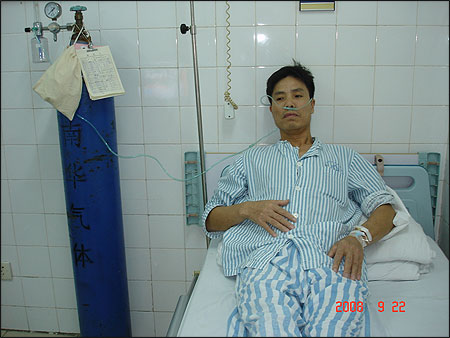
Using Grass-Roots Sources
I turned to grass-roots sources, such as those who are involved with improving workers’ well-being, and set out for Chongqing, a mega-industrialized city in western China, surrounded by poor villages that produce a steady supply of migrant workers. There I met with an independent lawyer by the name of Zhou, who is well known for fighting for the rights of workers maimed in factories.
Zhou works, eats and sometimes sleeps in apartments he shares with his associates, some of whom include maimed workers he has hired. Before coming to his office, I was invited to eat a lunch they cooked and ate together around a big table like a family. In his office were photographs of Zhou with Westerners with whom he met to discuss the status of workers’ rights and legal practice in China. When he wins a case for his clients, his payment is part of the compensation. During our visit, he told me about various victims he had served and copied files of some typical cases for me. He also called workers who were suffering from serious pneumoconiosis—a chronic disease of the lungs due to repeated inhalation of particles of dust, silicate and carbonate—to set up interviews for me with them.
From Chongqing, I traveled by bus for four hours to reach Wanzhou. The next day, after two hours in a minibus and a bumpy 40-minute motorcycle ride, I arrived in the county seat of this mountainous village. There I met with workers, 42-year-old Mr. Ran and 45-year-old Mr. Pu, who’d come home after acquiring this incurable lung disease while working in Zhejiang, the eastern province where I’d just been. They contracted this illness while working in a pottery mill without any protection. Eleven fellow townsmen who worked in the same mill had also been diagnosed with this disease after inhaling silicon dust for five years. Ran and Pu told me how their boss at the mill tricked them into signing an agreement to accept 7,000-50,000 yuan in compensation (roughly 1,000 to 7,000 U.S. dollars). They believe they deserve to be compensated with 500,000 yuan (or 70,000 U.S. dollars), according to China’s Law on Prevention and Control of Occupational Diseases. Seven of the victims from this town, I was told, had died before the lawsuit on their behalf was even filed.
Ran and Pu gave me copies of their medical records, including their certificates of diagnosis and legal documents. With their dim futures, their families are foremost in their minds, and they just hope to win this lawsuit in which Zhou is representing them. They are not at all certain of getting the outcome they desire; they told me that the person who is registered as owner of the plant is not the real boss, and there are issues involving bankruptcy of the factory.
Pneumoconiosis (and silicosis, a form of the disease several of these men had) primarily affects miners, sandblasters and metal grinders, and it consistently tops the list of China’s occupational illnesses. Recently some migrant workers who have silicosis have won class-action suits against employers, and such cases have drawn attention from China’s most powerful leaders. As Zhou explained to me, among his clients, silicosis and amputation are the most common cases.
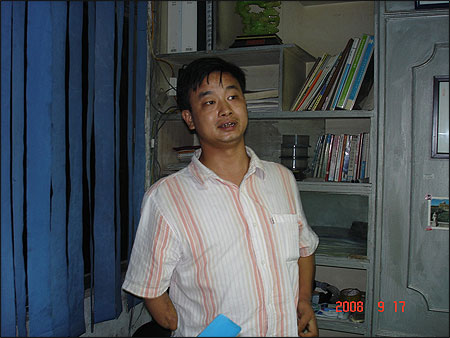
Local Hurdles
Now I wanted to talk with people at the Guizhan Institute of Highland Development, a nongovernmental organization (NGO) helping gold miners who live in what are called “villages of silicosis” in Guizhou Province. Its coordinator persuaded me by telephone not to come, since a local authority had cracked down on their work. It would be impossible for me to approach any workers; in fact, the institute was no longer contacting any of them. When I tried to open their Web site after our conversation, I found it listed as an “expired domain name.”
What had become clear in my reporting is how often local Chinese officials try to conceal the scale of disease, injury and deaths from industrial (and natural) disasters. They do this to avoid punishment from central party officials and citizens’ anger; some local leaders even profit from partial ownership in the lucrative businesses involved in these health dangers. These same officials can make it difficult for NGOs—most of whom receive operating funds from overseas foundations—to operate; registration is fraught with obstacles. To register at the local civil affairs department requires sponsorship by a government institution. Some NGOs decide to register as a business through a local industrial and commerce bureau, but they have to pay substantial fees and taxes.
In Longgang’s industrial district, home to more than three million migrant workers at thousands of export factories, the streets are choked with construction vehicles competing for space in a city on the move. It is a satellite town of Shenzhen City, in Guangdong Province. Here I was introduced to Qiang Zhu, cofounder of an underground NGO for migrant labors’ rights. He lost his arm in a crude machine while making plastic bags. In his office, next to a dusty construction field and beside a noisy road, the 25-year-old told me what happened to him and about the founding of his organization. He spoke in a calm voice as he told me about how he and his volunteer partners visit hospitals and dormitories to provide legal support to injured workers.
At Zhu’s office, I interviewed three young workers who lost their fingers in accidents at a furniture factory, at a hardware shop, and at an electronic plant. Each told me of the moment when he was injured and how fellow workers and bosses responded to the injury. They had seen foreign businessmen come to the factories, but they didn’t know who they were, and they did not know to what country the exported products were being shipped. Each described the part he made, but none knew what the final product looked like. They talked of family and the future, with each concerned about the amount of compensation he might be awarded. Though I likely seemed breezy in my conversation with them, in my heart I felt sympathy and sadness.
Visiting a Hand Injury Hospital
At Longgang District Central Hospital, a ward is devoted to hand injuries and surgery. In it, patients fill 142 beds of this five-floor building, which is separated from other parts of the hospital. On a sweltering evening, Zhu and I went to this building and, posing as Zhu’s friend, I talked with three workers with bandaged hands. The youngest I spoke with was 18 years old. Perhaps because of their youth, they seemed less worried than how I imagined they’d feel and were willing to talk with me. However, they were shy of the camera as they scurried from bed to bed, having fun trying to avoid it.
In days that followed I rode a bicycle to almost every industrial zone in the Longgang area. I pedaled by factories of all kinds, but I couldn’t enter any except a crude punch machine factory used to train first-time workers. Zhu and his friends tried to help me, but they couldn’t get into the workplaces either. Volunteers are threatened sometimes for trying; Zhu said that last year two knife-wielding assailants attacked a volunteer from the Migrant Worker Centre who had been offering education on labor contract law. Zhu did give me an album containing photos of shabby workplaces taken by workers without the knowledge of their employers.
In Shenzhen, I connected with a doctor before visiting the Hospital for the Prevention and Treatment of Occupational Diseases. I made this connection as a backup plan, though I intended to visit patients in their rooms on my own. I’d go to the ward of occupational diseases after 3 p.m. because I knew the schedule of doctor visits, transfusions, injections and the dispensing of pills finished before that time, so no medical personnel would be there. Once, when I encountered a doctor or nurse while interviewing, I told them I was a social worker offering help to the patients. And when I met patients, I said I was an investigator for a project on occupational diseases. No press card or introduction letter was demanded. I could take photographs and record my conversations.
Two women with a chronic condition caused by chemical poisoning told their stories in detail and gave me medical records, certificates of diagnosis, and other documents. And when our conversations were over, they introduced me to other patients on the ward. Their kindness helped me get to know other patients. By talking with people who had different kinds of chemical poisoning—all related to industrial work—I could report on conditions I’d learned about in the academic papers I’d read.
For most of the patients, after getting sick they received 800 yuan (about 120 U.S. dollars) each month. The vast majority are disputing that level of compensation with their employers. Some offered me contact information for their factory managers; most are businessmen from Hong Kong or Taiwan. I called them and asked the reasons for specific workers’ diseases or injuries. Most blamed them on the workers’ carelessness. All of them refused my request for an interview and denied they were paying improper compensation to the workers.
Finding a Network of Sources
I gradually found my way inside the network involved with workers’ health and rights. It spreads throughout China and consists of NGOs, lawyers, scholars, doctors and some international organizations. Now I am able to crosscheck information from different angles. When an NGO leader talked of social audit firms inspecting manufacturers for the importers in the West, I spoke to an auditor, Ms. Yang. We met at a Starbucks coffee shop in Guangzhou, the capital city of Guangdong Province.
Yang kept a low profile at the coffee shop. She told me she’d worked for an NGO in support of workers’ rights, transferred to an audit firm, and now is an independent auditor and advocate for workers’ rights. She showed me hundreds of photos she’d taken and collected and explained the harmful working conditions she’d found in a variety of industries. She shared her analysis of the causes of occupational illnesses and injuries, let me know about the usual ways that factory managers try to fool and bribe auditors, and pointed out the loopholes in the social audits done for multinational companies.
Yang’s conclusion was that the social audits of factories (also referred to as “factory inspections”) are far short of being effective tools to control workers’ injuries and illness. To some extent, the audits are a convenient way for the Western importers to ease social blame.
After returning to Beijing in October, I heard often about the bankruptcy of factories in Guangdong and Jiangsu Provinces due to the economic crisis in the United States and other Western countries. In China, the voice blaming the collapse of these factories on the new Labor Contract Law, which offers additional protections to factory workers, became louder and louder. Some economists and investors complain that this is not the proper time to enforce this law, which they argue raises production costs while improving worker conditions. Some are calling for suspension of the law. A “bad job is better than no job,” they say. Government leaders emphasize that their top priority remains the ensuring of economic growth rather than any other policies.
Workers’ occupational health protection is most uncertain in China’s economic system of “socialism with Chinese characteristics.” Even the topic of health problems among these workers seems out of sync with the ways of China today. Yet it is a story that needs to be told, however difficult this might be to do.
Ran An, a 2008 Nieman Fellow, was a Bill & Melinda Gates Foundation Global Health Reporting Fellow. He returned to China, where he has been reporting this story while rejoining his job at China Newsweek, the Beijing-based magazine printed in Chinese that belongs to the China News Service. His story about occupational illnesses in China will be published in China Newsweek.
